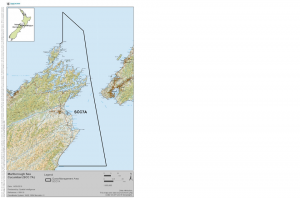Ministry of Primary Industries bows to Pressure form GOS
We need your to input FAST for a slowing of the MPI process of issuing more quota on an important species for the Health of the Marlborough Sounds.
Big business is putting pressure on MPI to increase the removal of yet another species from our ecosystem without first displaying the correct procedure to ensure the Marlborough Sounds ecosystem remains healthy. We need input from concerned locals and experts.
In the Sounds, we have plenty of commercial divers who work in this industry, now is your chance to protect your industry and comment on the below MPI Draft recommendations.
Local science experts please also pass on your recommendations as at this stage we have little to know science to base theses change.
Comments and information can also be sent to us Directly: Contact GOS

Sea Cucumber fishing Plan
In reviewing the SCC 7A TAC, the Minister of Fisheries added a condition:
“I have asked Fisheries New Zealand to work with industry, iwi, stakeholders and the Marlborough Sounds Community on a catch spreading plan, and also to ensure harvesting occurs only by the method of hand gathering. I have also directed that they meet with those submitters concerned about potential impacts during the fishing year to discuss any issues that may arise and ensure they are addressed.”
Fisheries New Zealand invites your comment on this draft plan by 9 June, 2019. Please contact:
Anthony Brett
Ph 03 466 3688
What is to be reviewed and for Comment is below :
2019 Fishing Year (April 2019 – March 2020)
How the catch will be spread
Quota holders and fishers who wish to hold annual catch entitlement (ACE) have agreed that catch will be capped across subareas within the fishery to assist in spreading catch. The initial estimates of maximum amounts to be taken from each area are as follows;
Cook Strait (Rarangi To Cape Komaru) 2.0t
Pelorus Entrance (Cape Jackson to Chetwode) 2.5t
Eastern D’Urville Island (Admiralty Bay to Rangitoto Island) 2.0t
Pelorus Sound 2.5t
Queen Charlotte Sound 4.0t
Port Underwood 1.5t
Tory Channel 0.5t
These caps have been made with incomplete Information and, in areas such as Pelorus Sound, where information on the abundance of the stocks is limited, exploratory fishing will be required to confirm these over the course of the fishing year. Adjustments may need to be considered and incorporated into this plan.
Handgathering
The method of harvest will be hand-gathering by diving. In practise, this means populations at depths greater than 15 m will not be harvested, due to the limitations imposed by decompresion times required when operating at greater depths.
Comment:- This will retain undisturbed spawning aggregations within the fishery.
Minimum size
Fishers have agreed to implement a voluntary minimum size of 14 cm. This will help ensure that no area or bay is “fished out”.
Comment:- In future, data on population size structures may let us know the proportion of individuals that would remain in a fished area.
Catch Monitoring
Implementation of electronic reporting this year will include position recording in real time. In the meantime, fishers will report by fine scale based on the p?ua fishery statistical areas.
Annual Review
In the medium term, it is proposed to have an annual review of the previous year’s fishing. This review will include how well monitoring is operating, adherence to the fishing plan, concerns or complaints from stakeholders or residents, and whether improvements or changes to the plan are required.
Notwithstanding, a review may be held at anytime should stakeholders raise concerns that Fisheries New Zealand considers require a review.
Future Fishing years
Rotational fishing
Based on what they have observed, commercial fishers suggest that in most locations an area can be fished again after three years. More research or monitoring is required to confirm if this is the case. If confirmed, this provides an opportunity to consider a rotational fishing strategy.
Comment:- As information improves, Queen Charlotte Sound/Totaranui and Pelorus Sound could be divided into 4 sectors with one sector being fished rotationally on any year, giving a three year no fishing break for each sector. Discussion is needed on where the lines would be?
Spawning aggregations
Sea cucumbers are broadcast spawners with larvae that remain in the water column for about 25 days. Therefore, measures to ensure the density of spawning aggregations should be considered.
Comment:- While undisturbed sea cucumber aggregations deeper than 15m will be available, perhaps some discrete closed areas could be considered in the future?
